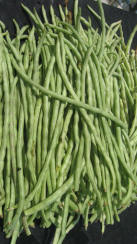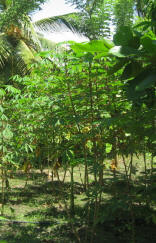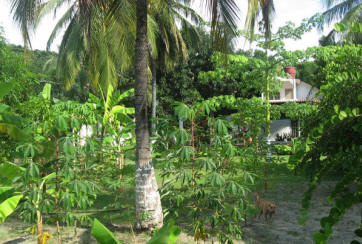Cienaga, Magdalena
Colombia, South America
mango
banana
papaya
cassava
coconut
beans
“Our Homa garden on the Caribbean Sea”
“When we bought this house on the beach, there were cocoa plum bushes planted on the borders of the property. We began to recycle all fallen leaves and then we created a reafforestation system. We started planting trees and ornamental plants.”
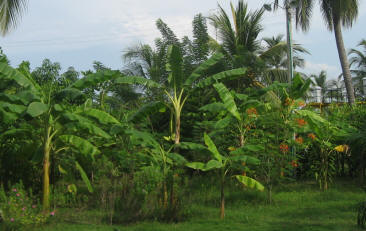 “We planted cassava, mangos, guava, papaya, plums, beans, sapodilla, lemons, avocados, grapes and many aromatic herbs such as mint, oregano and plenty of basil around the house and all this on the salty sand of the beach. We spray everything with the Agnihotra ash water solution and of course, we practice daily sunrise and sunset Agnihotra.”
“We planted cassava, mangos, guava, papaya, plums, beans, sapodilla, lemons, avocados, grapes and many aromatic herbs such as mint, oregano and plenty of basil around the house and all this on the salty sand of the beach. We spray everything with the Agnihotra ash water solution and of course, we practice daily sunrise and sunset Agnihotra.”
“We live practically on the ocean-front but all these plants really took off after we started doing the Homa fires. Now, we are surrounded by mango trees, which give fruits all year round! Usually the mango is a seasonal fruit, but on our land it gives fruit at all times.”
“Now can you imagine what happened? We were not here for 3 months (nobody did Agnihotra) and during that time the mango trees did not produce! We are truly amazed because we had mango all year round. Nobody has that around here.”
“Also, we had a papaya tree growing in the sand with a cluster of six papayas! Once we got a cassava plant about a meter long and 30 cm thick. It was very heavy. Nobody has what we have here. Practically speaking we have transformed our small farm of 2,700 square meters.”
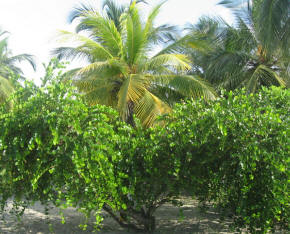 “We also have 4 varieties of plantains and bananas which are the manzano banana (small banana), a thick variety banana with 4 edges, a big banana called “Harton” (eaten fried or green) and the regular banana variety which is eaten in fruit salads.”
“We also have 4 varieties of plantains and bananas which are the manzano banana (small banana), a thick variety banana with 4 edges, a big banana called “Harton” (eaten fried or green) and the regular banana variety which is eaten in fruit salads.”
“Our beans reach a length up to half a meter. We have a mango variety called ‘Tommy’ which gives big fruits and once we harvested a mango which weighed about 2 kilos and it was delicious. That tree gives baskets after baskets of mango.”
“Like the coconuts, which are full of water and we constantly drink coconut water. We have various kinds of coconut trees which are always full of fruits.”
“We recycle the water and we recycle all waste, except plastic, glass and metal. For example all organic waste material serves as fertilizer for the soil. When we arrived here, there was no grass growing. Now, as you can see, it is like a stadium and we did not bring this from outside. We are able to donate much of our delicious garden products to the nursing home.”
“We also take Agnihotra ash every day and we feel very good, very harmonized. Here, at our little farm, we invite the people for Agnihotra, because we want to share the good things that are happening to us. This is fantastic and a very real experience.”
